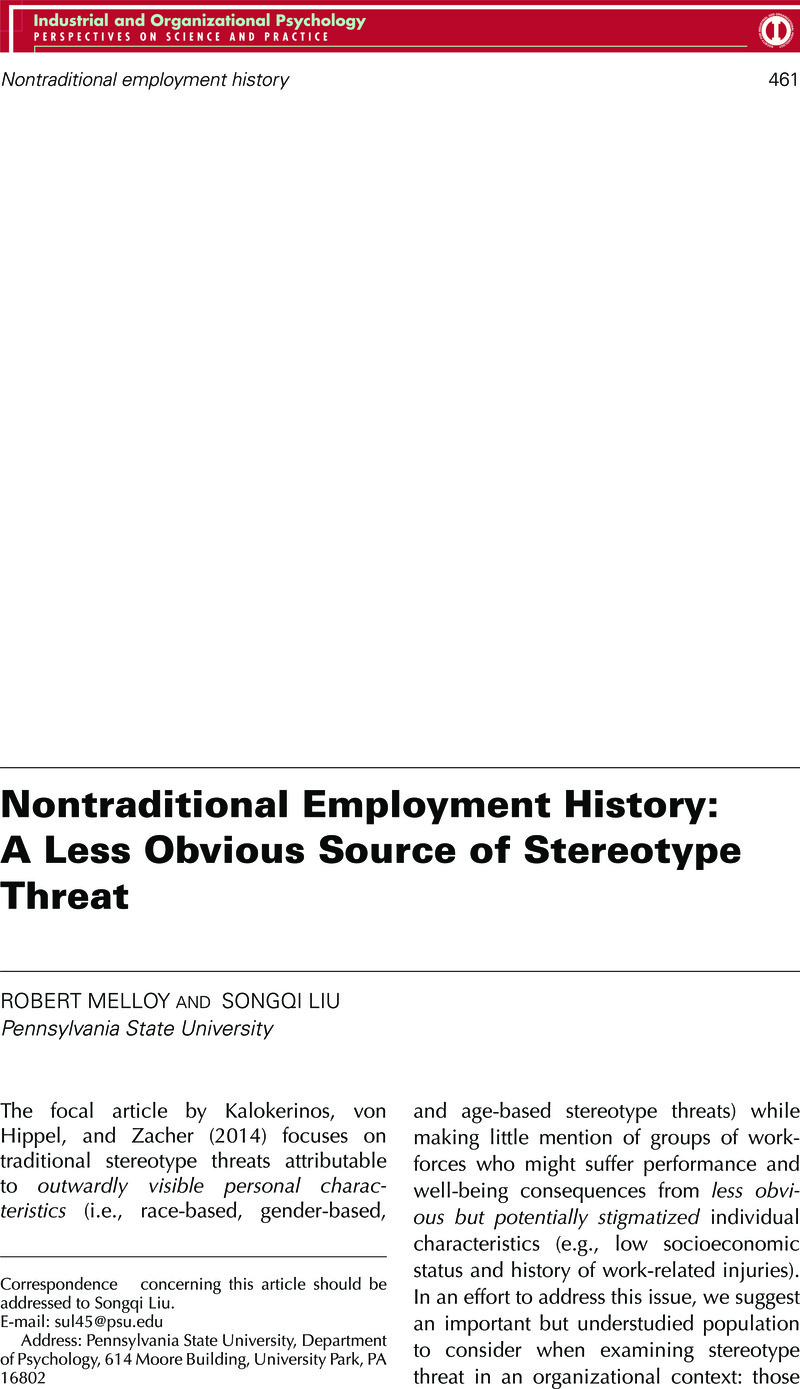Crossref Citations
This article has been cited by the following publications. This list is generated based on data provided by Crossref.
Casad, Bettina J.
and
Bryant, William J.
2016.
Addressing Stereotype Threat is Critical to Diversity and Inclusion in Organizational Psychology.
Frontiers in Psychology,
Vol. 7,
Issue. ,
Thompson, Mindi N.
Dahling, Jason J.
Chin, Mun Yuk
and
Melloy, Robert C.
2017.
Integrating Job Loss, Unemployment, and Reemployment With Social Cognitive Career Theory.
Journal of Career Assessment,
Vol. 25,
Issue. 1,
p.
40.
McWhirter, Ellen Hawley
and
McWha-Hermann, Ishbel
2021.
Social justice and career development: Progress, problems, and possibilities.
Journal of Vocational Behavior,
Vol. 126,
Issue. ,
p.
103492.
Chang, Yuanqing
Liu, Songqi
Zhang, Xin
and
Truxillo, Donald
2022.
The Nuanced Relationship Between Age Stereotypes and Personnel Decisions: Contextual Considerations.
Work, Aging and Retirement,
Vol. 8,
Issue. 4,
p.
348.
Liu, Songqi
Bamberger, Peter
Wang, Mo
Nahum‐Shani, Inbal
Larimer, Mary
and
Bacharach, Samuel B.
2023.
Behavior change versus stability during the college‐to‐work transition: Life course and the “stickiness” of alcohol misuse at career entry.
Personnel Psychology,
Vol. 76,
Issue. 3,
p.
945.





